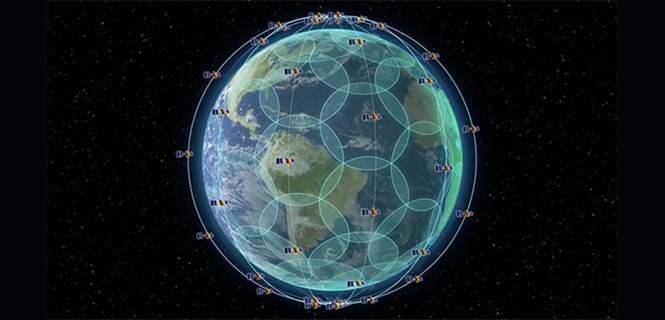GPS World Article, “Navigation from LEO: Current Capability and Future Promise,” was one of their most popular articles in 2017! This article was a July 2017 cover story and discussed in detail Satelles STL service, which has been in operation since May 2016. Excerpts from the article are as follows: “Many from industry and government are already using this service to achieve a more robust PNT solution. This service will only continue to improve with the Iridium NEXT satellites under deployment — the first 10 were successfully launched in January.
STL is a non-GNSS solution for assured time and location that is highly resilient and physically secure. STL utilizes the Iridium constellation to transmit specially structured time and location broadcasts. Due to their high RF power and signal-coding gain, the STL broadcasts are able to penetrate into difficult attenuation environments, including deep indoors. Like GNSS signals, these broadcasts are specifically designed to allow an STL receiver to obtain precise time and frequency measurements to derive its PNT solutions.
STL is able to augment or serve as a back-up to existing GNSS PNT solutions by providing secure measurements in the presence of high attenuation (deep indoors), active jamming and malicious spoofing. Unlike the MEO GNSS satellites, Iridium uses 48 spot beams to focus its transmissions on a relatively small geographic area. The complex overlapping spot beams of Iridium combined with randomized broadcasts give a unique mechanism to provide location-based authentication that is extremely difficult to spoof.
Two main technical innovations are applied to the existing Iridium quadrature phase-shift keying (QPSK) transmission scheme to facilitate precision measurements. First, the QPSK data at the beginning of an STL burst is manipulated to form a continuous wave (cw) marker, which can be used for burst detection and coarse measurement. Second, the remaining QPSK data in the burst is organized into pseudorandom sequences, reducing the effective information data rate while providing a mechanism for precise measurement via correlation with locally generated sequences.
The processing gain of the sequence correlation operation also enhances the capability of the STL signal to penetrate buildings and other occlusions. STL is designed such that a receiver can reliably decode the bursts and perform precise Doppler and range measurements at attenuations of up to 39 dB relative to unobstructed reception. This is sufficient to penetrate buildings and other occlusions, providing coverage in most deep indoor and urban canyon environments. Link to full article



